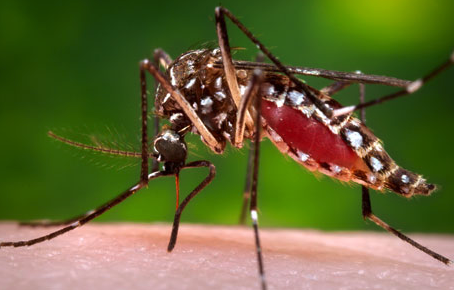Experts are predicting an over-abundance of ticks and mosquitoes this summer due to an unseasonably warm winter.
Of concern to commercial property and facility managers in the greater Fairfield and Westchester County areas are protective measures to reduce the risk of the diseases they transmit, including the potentially debilitating tick-borne Lyme disease and the mosquito-carried West Nile, Zika, and Eastern Equine Encephalitis, among others.
ELM has an established vector management program based on the understanding of the particular insect’s habitat in the landscape and the expertise and confidence of ELM’s well-trained technical team to use safe, environmentally sound, and effective control measures.
“Our main focus is preventative: to eliminate mosquito breeding areas and proactively treat tick habitats,” says Area Manager Charles Andrianus, ELM’s licensed pest control supervisor and director of its pest management program, “This is especially important for businesses serving vulnerable demographics, such as senior living facilities, hospitals and schools,” he added.
ELM offers both chemical repellent products that have been registered and tested for efficacy and human safety, and natural organic solutions to treat mosquitos and ticks, and other biting insects, such as black flies, and parasites, such as fleas.
ELM’s mosquito and tick service begins in June for existing landscape maintenance customers. It is also available as a stand-alone or enhanced service for property and facility managers interested in securing an extra layer of protection. The service consists of three treatments at one-month intervals. Landscape and habitat modifications that can diminish vector habitats are recommended in cases where it can maximize protection and are delivered separately.
Mosquito Prevention Basics:
• Ensure adequate protection during times of day when mosquitoes are most active.
• Eliminate standing water where mosquitoes can breed.
• Keep properties debris-free.
• Identify areas that might develop and harbor mosquitoes and treat.
• Address both larval and adult mosquito control.
• Use approved, safe, and safely-applied diverse control measures to reduce mosquito populations.
• Modify landscape plantings to introduce beneficial insects and mosquito-repelling plants, such as marigolds and ageratum.
Tick Prevention Basics:
• Introduce deer-resistant plants such as sages and ornamental salvias, and tick resistant plants, such as rosemary and citronella.
• Select the least toxic chemical control applications and apply along wood lines and walking trails.
• Make landscape modifications in areas adjacent to woods, stonewalls, or ornamental plantings to create a tick-free zone.
• Design buffer areas using gravel to deter ticks from crossing onto lawns from wooded areas.
• Alter landscape’s shady areas to increase sunlight.
• Change landscape practices to create areas less hospitable to ticks.
• Identify areas that might develop and harbor ticks and treat.
• Cut back the wood lines to create a wider buffer zone between plant material ticks hide in and public pedestrian areas.
• Keep brush piles and tall grass cleaned-up and mowed.
• Stay on marked, walking trails; never follow a deer trail.
• Shower and wash thoroughly if you’ve been hiking and check for ticks.
• Wear adequate protection and clothing with insect repellents that utilize DEET, or alternative organic products, such as botanical oil-based products, such as cedar, which is lethal to ticks, or organic neem oil.
Mosquitos and ticks are more than a summer nuisance. The diseases they can carry are serious. General protective and control measures work.
For more information on ELM’s pest control program and mosquito and tick treatment services, contact Bruce Moore, Jr., vice president, operations, at 203-316-5433.
Follow us on Facebook
(Photo: CDC © Aedes aegypti mosquito, carrier of Zika virus).

